Aside from getting a taste of both the food and the culture in Hanoi, we couldn’t leave without reliving the rich history here as well. So many important world history events have taken place here, and we committed ourselves to learning as much about them as we could.
Ho Chi Minh Complex with Hanoikids
We booked a free tour with Hanoikids, a group of local university students who take tourists around the city in exchange for practicing their English. They are so popular (#1 on TripAdvisor) that they could only squeeze us in for a half day tour. Nonetheless, it was so great to have our own local, private guides for free!
We picked the Ho Chi Minh Complex as our destination, which consists of the Ho Chi Minh Mausoleum (currently closed for renovations), Ba Dinh Square, Presidential Palace, Ho Chi Minh’s Residence, and the Ho Chi Minh Museum.

We started by walking by the mausoleum and Ba Dinh square, taking some pictures from the distance, since the mausoleum was closed for renovations until later this year. The Presidential Palace was right next to it. Built by the French during the colonization period, it was intended to show the superiority of the French over the Vietnamese people. Despite its name, Ho Chi Minh never actually lived there, even when he became the leader of Vietnam. He refused to live in such an extravagant building, while the rest of the Vietnamese population was suffering. Instead, he followed his humble and simple lifestyle, living in a nearby wooden house on stilts. The inside of the house is still preserved and looks exactly like Uncle Ho (as he is affectionately referred to) left it when he passed away in 1969. The rooms inside the house were all very simple with just essential furniture – a chair, a desk and a bed. Outside, there is a pond where Ho Chi Minh used to feed his fish.
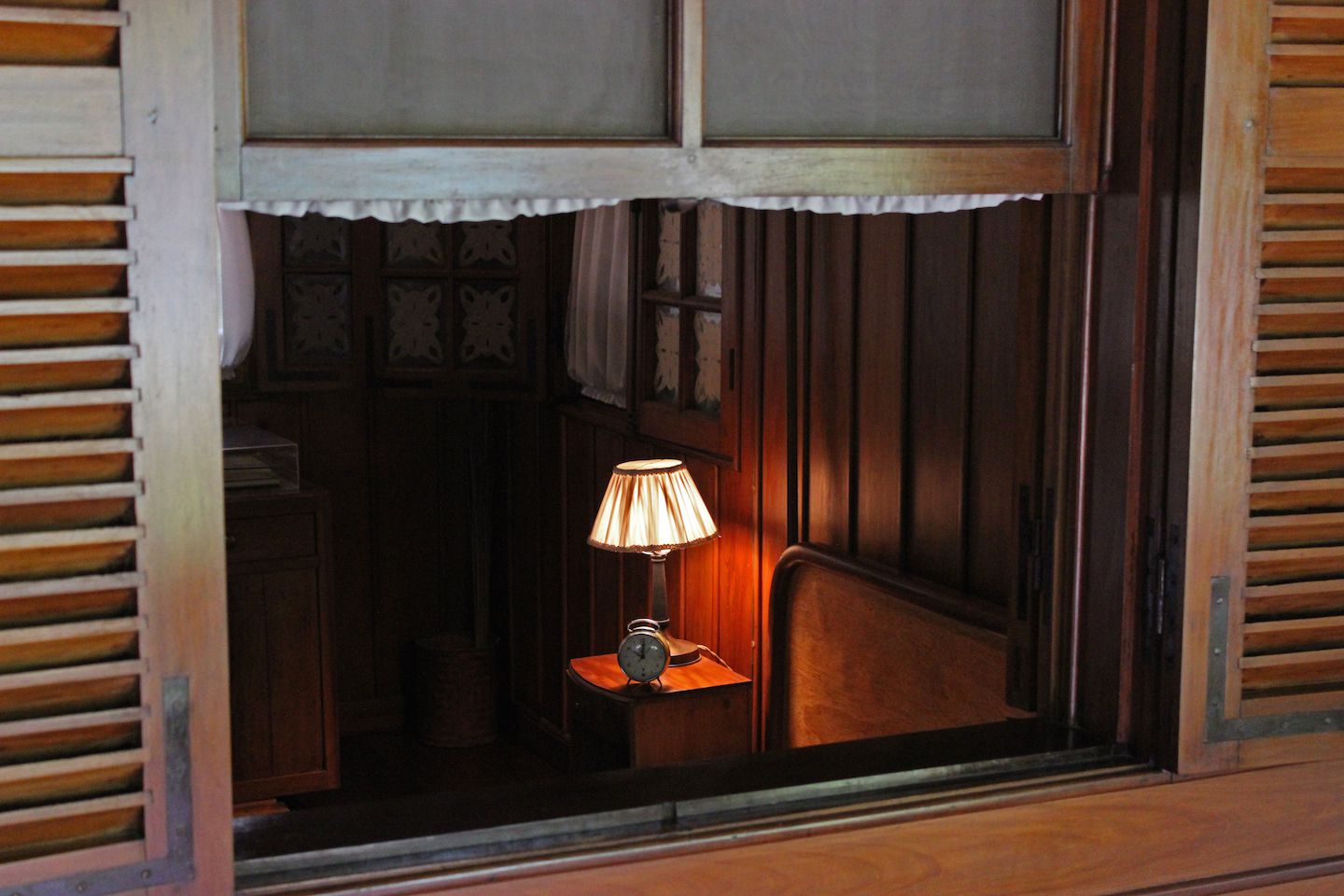
During our tour, we quickly walked through the Ho Chi Minh Museum. The museum is quite big, with three main sections: Ho Chi Minh’s life, the life of the Vietnamese people during the struggles, and victory under Ho Chi Minh’s command and exhibitions of international events that Ho Chi Minh took part.
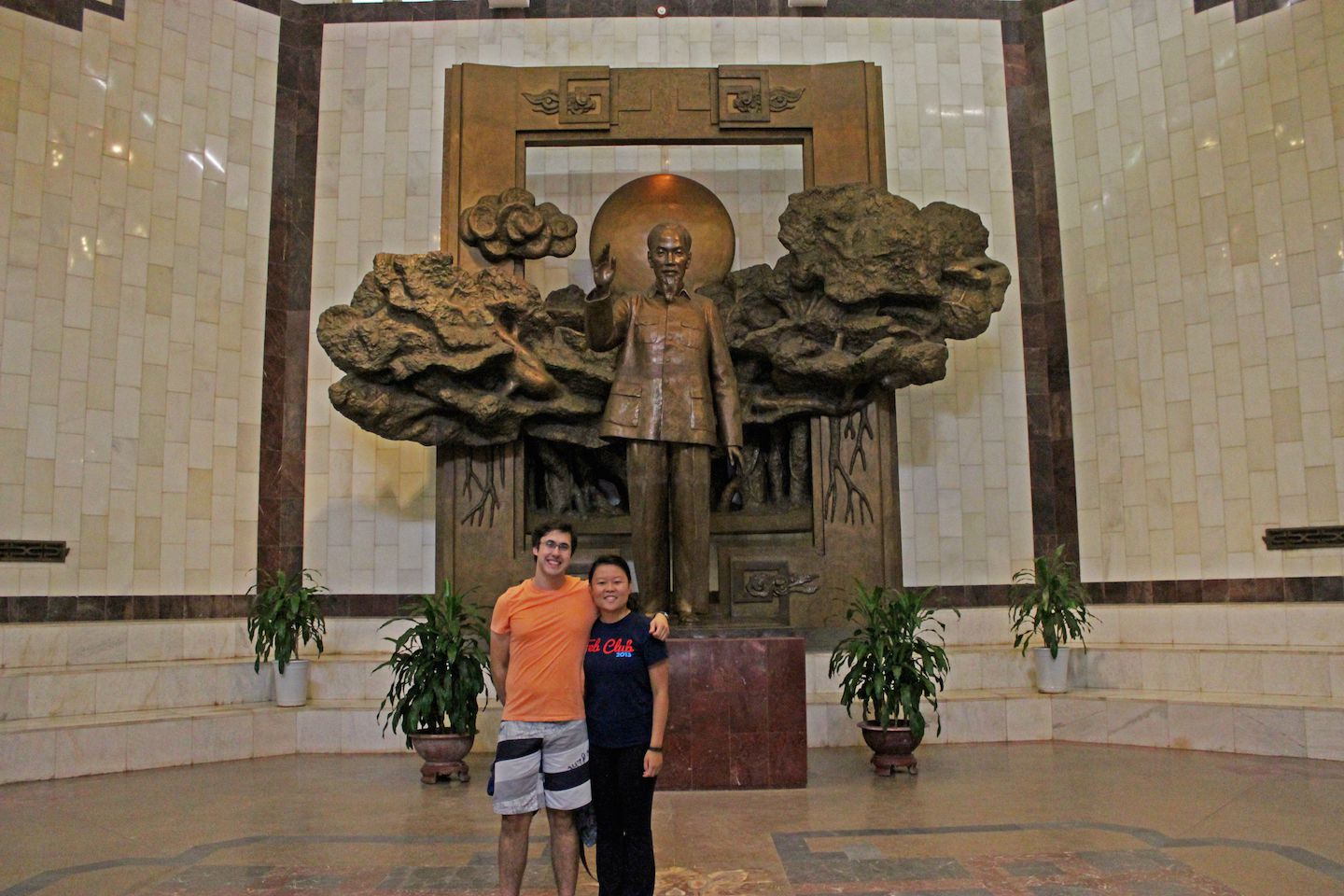
The sections were all very interactive and the exhibitions were more like an artistic re-creation of what happened during the time, different than what you see in usual museums. The whole tour was very interesting and it was a great place to learn more about Ho Chi Minh’s life and his impact on Vietnamese history. Also a great big thank you to Tony and Jen from Hanoikids!
Hoa Lo Prison (Maison Centrale)
Hoa Lo Prison was built by the French to serve as a prison during the colonization period of Vietnam. As soon as you get through the main entrance gates you can already feel a heavy and tense atmosphere, where terrible things must have happened to people.
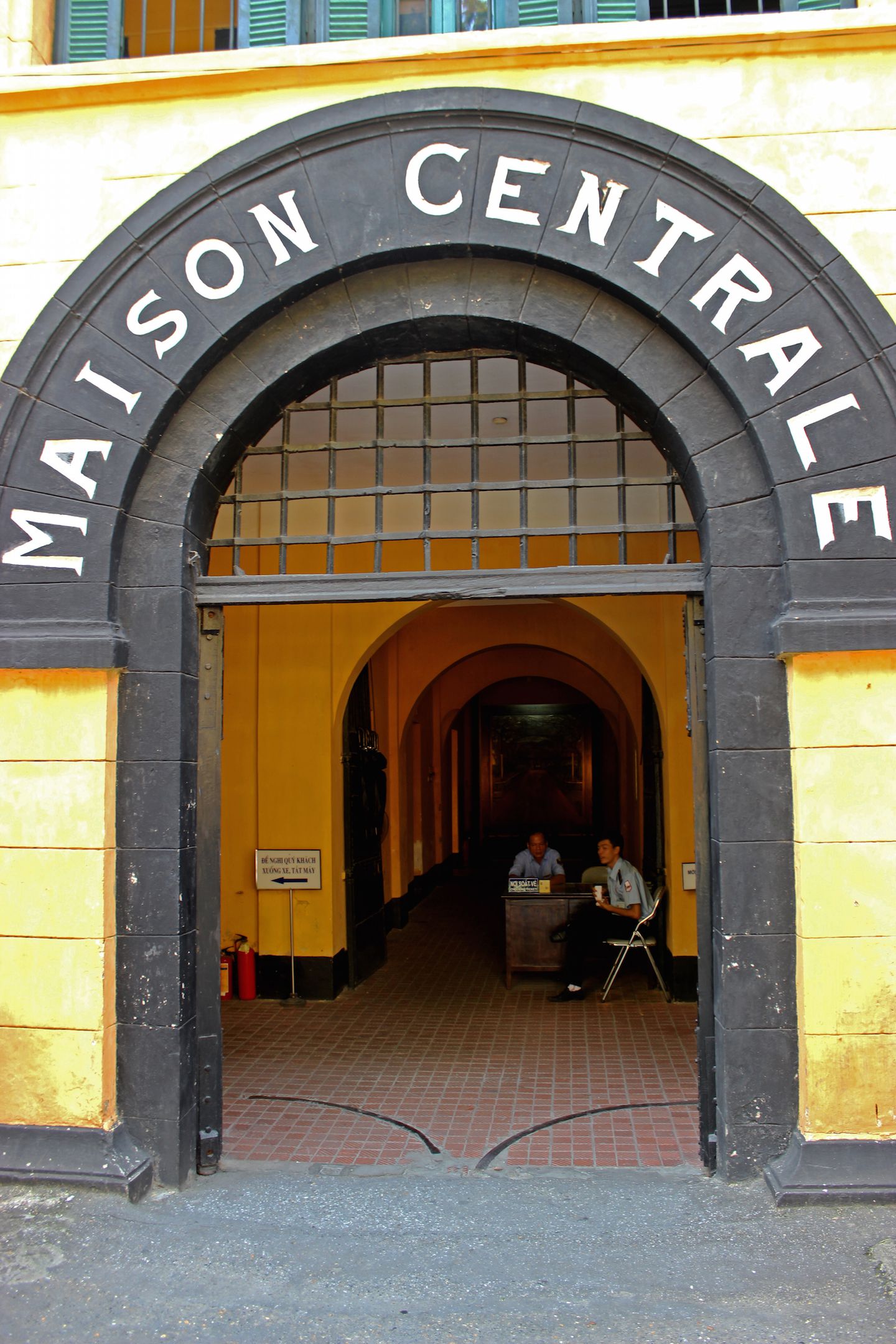
The first building contained the solitary confinement cells – small 2x2m dark rooms where prisoners with bad conduct would be sent to. The prisoners were tortured and forced to live in subhuman conditions, where the place you eat is also the place you do your necessities. Women were treated no differently. Right next to the confinement cells was the execution hall, where people were beheaded by a massive guillotine.

Besides the cells, there was also a museum with photos and artifacts showing the conditions of Vietnamese prisoners during the French colonization, as well as American prisoners during the Vietnam War. The latter was very interesting as it showed how well the Vietnamese guards would treat the captured American soldiers. Decent meals, showers, and even entertainment were provided for them, such as chess competitions or ping pong. There were even pictures showing Christmas parties and letters the soldiers received from back home. It all seemed legitimate at sight, but of course we were not 100% convinced there was no propaganda involved.

We did a bit of research of our own afterwards. The American soldiers who were rescued or sent back home declared that they were forced to fabricate false reports and look happy in pictures, so that these could supposedly be used by Vietnam as a way of discouraging Americans from continuing to fight. Hoa Lo Prison was hence sarcastically nicknamed “Hanoi Hilton” by the American soldiers. It would seem from these stories that the museum was propaganda after all, but can we trust what the soldiers said 100%? I guess this is one of those situations where we will never find the actual truth and it’s up to each person to judge for themselves. The important thing is to question things and not take them at face value.
Flag Tower / Military History Museum
Used as a military post, the Flag Tower survived the wars in Vietnam and is today one of the symbols of the city, bearing the country’s flag as a sign of national pride. It was indeed a very beautiful sight and I can imagine how it was inspiring for the Vietnamese people.
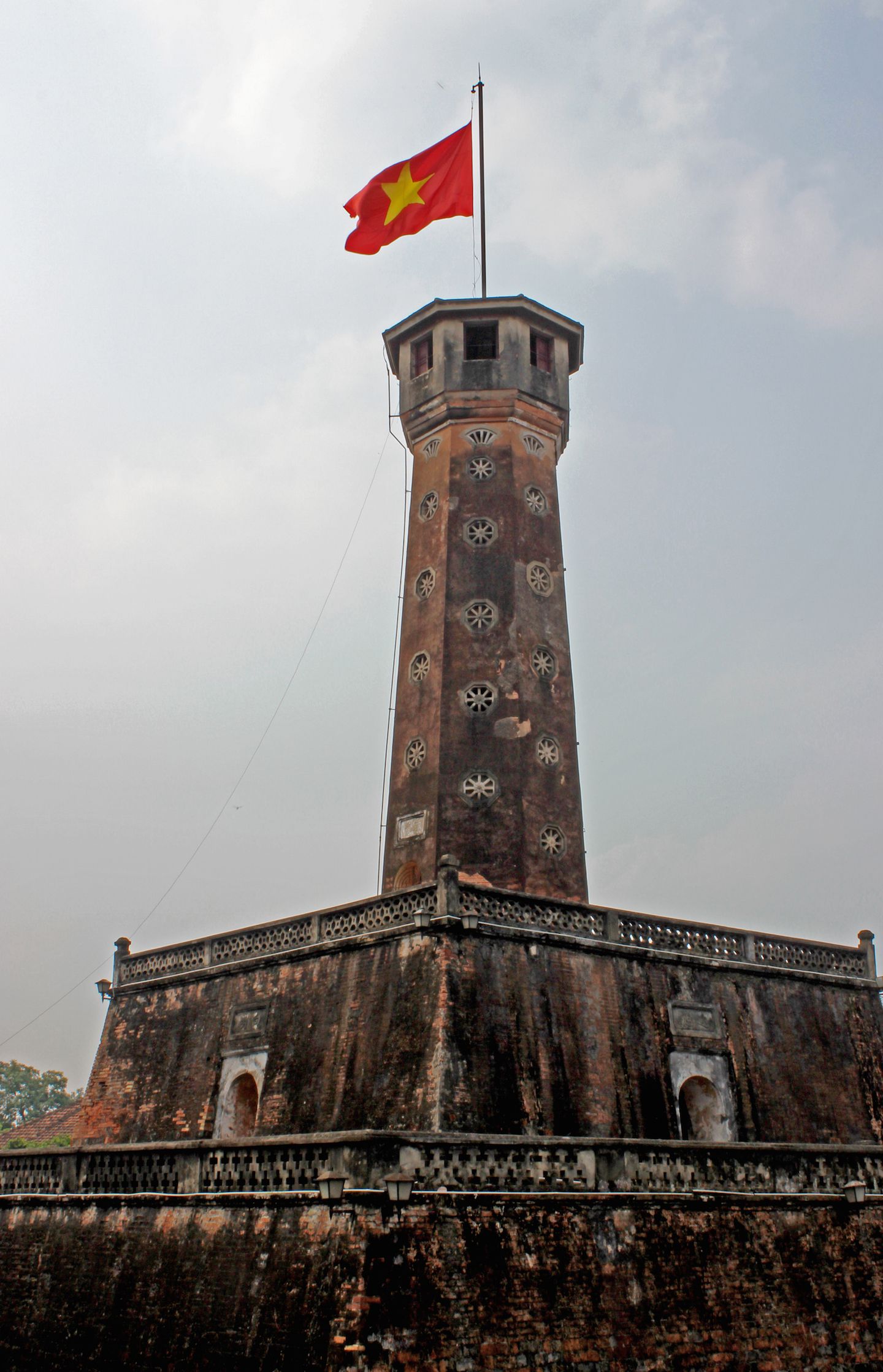
The Military History Museum around the tower was a big attraction for me. The exhibitions of weapons and vehicles that made it through the war or were captured by the Vietnamese were quite unique. It ranged from simple rifles, to flamethrower tanks, to American jet fighters and chinooks.

My favorite part of the museum was a mountain of parts of airplanes that were taken down by Vietnamese anti-aircraft batteries, with the masterpiece being the tail of a B-52 bomber. Other airplane engines and turbines completed the scenery.
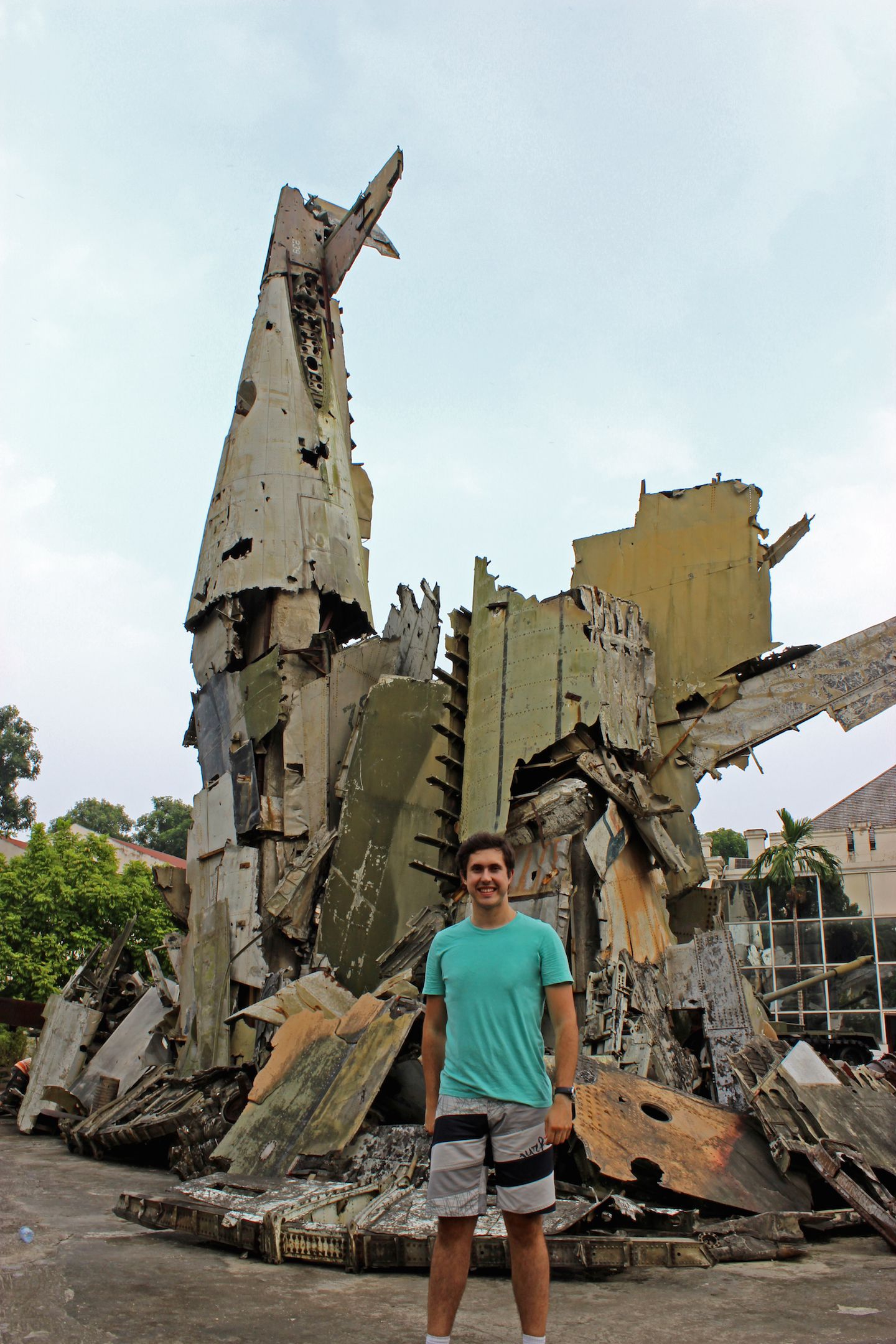
The Military History Museum was one of my favorite sights in Hanoi, probably because of my love for airplanes and basically anything related to war equipment (I think they are the pinnacle of engineering, for the wrong reasons, but still perfectly engineered).
Vietnamese Women’s Museum
This was the first museum we have been to that depicted the diverse and important role of women in society. Vietnamese women in family, history, and fashion were shown through permanent exhibitions with real objects and materials. I was surprised by how many Vietnamese traditions were based on when a woman reaches maturity, marries, and gives birth. Plus it gave us a new perspective on women in Vietnam, for example, the street vendors.
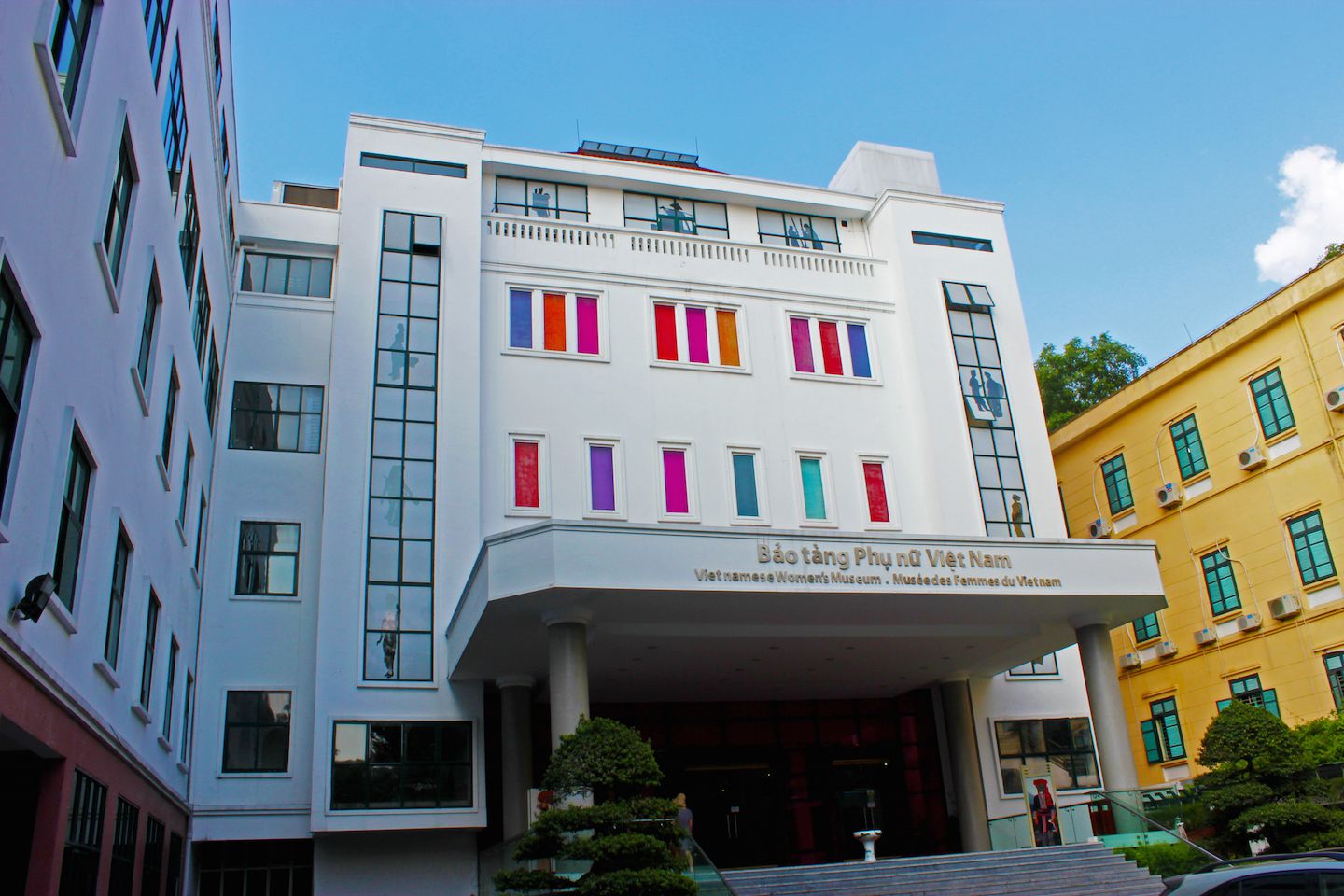
Before the museum, both Julie and I would completely ignore most of the women street vendors, mostly because it was annoying to have somebody coming to you every minute trying to sell something, sometimes touching you in the process. Showing any interest only encourages this kind of behaviour. After the museum, we definitely looked at them in a different way, after hearing a few life stories and all the difficulties these street vendors have been through. We are still not interested in buying anything from them nor do we enjoy being heckled, but now we remind ourselves that they’re just trying to support their families, the same way we would.
From war remnants to Ho Chi Minh, Hanoi’s many museums showcase a great deal of Vietnamese history. Combined with its unique culture and delicious eats, we were glad we spent a good chunk of time in Hanoi. Next up: a side trip to Sapa!
For more pictures from Hanoi, please visit the gallery!

